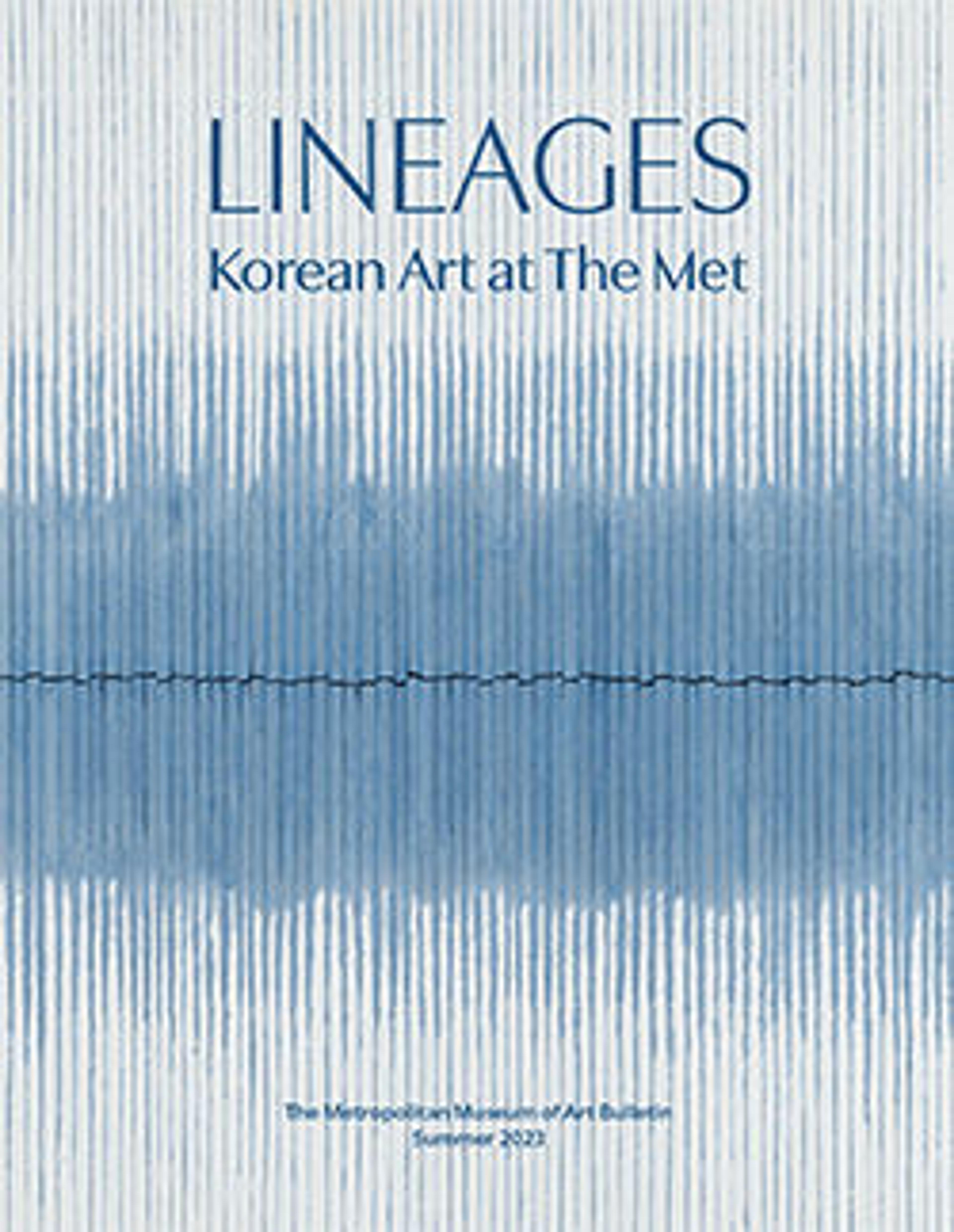Water-Moon Avalokiteshvara
A popular deity in the Goryeo period, the Water-Moon Avalokiteshvara (Korean: Suwol gwaneum) helped prevent calamities and diseases and safeguard travelers. This scroll shows the resplendently attired bodhisattva in three-quarter view, seated on rocks along the coral-dotted sea. At the bodhisattva’s feet stands the boy pilgrim Sudhana (Korean: Seonjae dongja); the description of his encounter with the deity in the Flower Garland (Avatamsaka) Sutra provides the textual source for the painting.
Commissioned by members of the royal and aristocratic families and executed by highly skilled painters, Goryeo Buddhist paintings gained fame in East Asia for their splendor. Their trademarks include delicate details, evident in this work in the transparent white veil, the lotus pattern on the red robe, and the gold-painted design on the garments.
Commissioned by members of the royal and aristocratic families and executed by highly skilled painters, Goryeo Buddhist paintings gained fame in East Asia for their splendor. Their trademarks include delicate details, evident in this work in the transparent white veil, the lotus pattern on the red robe, and the gold-painted design on the garments.
Artwork Details
- 작자미상 수월관음도 고려
- 作者未詳 水月觀音圖 高麗
- Title: Water-Moon Avalokiteshvara
- Artist: Unidentified artist
- Period: Goryeo dynasty (918–1392)
- Date: 14th century
- Culture: Korea
- Medium: Hanging scroll; ink, color, and gold on silk
- Dimensions: Image: 40 1/2 × 20 3/8 in. (102.9 × 51.8 cm)
Overall with mounting: 72 × 27 3/8 in. (182.9 × 69.5 cm)
Overall with knobs: 72 × 29 3/8 in. (182.9 × 74.6 cm) - Classification: Paintings
- Credit Line: H. O. Havemeyer Collection, Bequest of Mrs. H. O. Havemeyer, 1929
- Object Number: 29.100.461
- Curatorial Department: Asian Art
More Artwork
Research Resources
The Met provides unparalleled resources for research and welcomes an international community of students and scholars. The Met's Open Access API is where creators and researchers can connect to the The Met collection. Open Access data and public domain images are available for unrestricted commercial and noncommercial use without permission or fee.
To request images under copyright and other restrictions, please use this Image Request form.
Feedback
We continue to research and examine historical and cultural context for objects in The Met collection. If you have comments or questions about this object record, please complete and submit this form. The Museum looks forward to receiving your comments.
